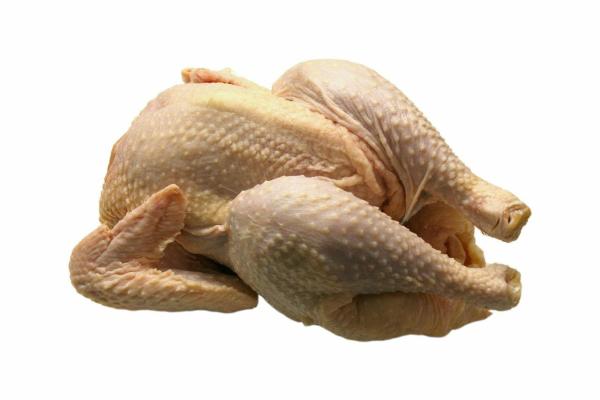Chicken is a significant source of foodborne illness. In addition to my wife, whom I trust the most, the CDC, our FDA and USDA, and the UK’s National Health Service all “currently recommend against washing raw chicken before cooking due to the risk of microbial transfer through splashed water droplets.” Much of this guidance was based upon a study in which red food dye in water assessed the splash associated with chicken cleaning. Still, no microbial analysis was performed on the splashes.
“This provides the first experimental evidence that washing raw chickens can lead to significant cross-contamination in a home kitchen.” [2]
A study in the current issue of the Physics of Fluid, a journal I have turned to several times over the last year to understand the airborne transmission of fluids, provides an experimental model. The setup is straightforward. They created a sink where they could control the height of the faucet and the force of the water and then surrounded the system with large agar plates, which served as the splash guard and the medium on which to grow out any bacteria that landed. They used chicken breasts, with and without skin, purchased at a local store. To create bacterial uniformity, all the chicken breasts were placed in a sterile container with some water and mixed about; then stored in a refrigerator for a day or two.
These are practical scientists; they knew my response to their work before it was published, noting that.
“Many home cooks will continue to rinse their poultry before use, however, and the relevant question then becomes how to minimize the splatter risk associated with washing.”
Before jumping to the safety tips, here is what they found.
- After washing chicken breasts on the “splashing platform” (real scientists do not use sinks), for 30 seconds at a rate of about 3 ounces per second, with the faucet 35 cm above the chicken surface, water spattered everywhere, and those agar plates grew out bacteria close to the landing zone of the drops. My wife and those other agencies whom I fear less were correct; viable “bacteria can be transferred through splashing from the surface of raw chicken.”
- The distance between the chicken and the faucet was the primary determinant of the degree of splashing; flow rate, faucet type, and height made little difference. Five inches apart seemed to be the sweet spot; 15 inches creates Splashfest!
A pause to hear from our sponsor, mechanical physics
As known of us who have taken Physics 101 or less know, “the Plateau– Rayleigh instability will break the fluid stream into individual droplets.” As I now understand it, the inertia of the water column is counteracted by the surface tension of the water. At various rates and distances, a stream of water breaks up into droplets. (You can find the Youtube explanation here.) The researchers refer to this as “pearling,” which is the physics behind the splattering caused by the chicken to faucet distance. Once pearling begins, “splashing becomes more prominent.”
And now, back to our article.
- The soft surface of the chicken breast also plays a role. Indentations on the surface, either from our manual manipulation of the chicken or from the force of the stream, act in the same way upon splashing as placing a spoon (with the same concave shape) under the faucet – water everywhere.
- The initial splash, the moment the water meets the chicken road as it were, also plays a “major role in the droplet transfer.” Slow and easy are the keys to safety in this instance.
- Bacterial cultures of the chicken before washing and from the agar plates were similar enough to conclude that the organisms “present on the surface of the raw chicken are dislodged by water.” Moreover, the bacteria cultured varied with the presence or absence of chicken skin.
Science-informed guidance
“Regardless of this risk for cross-contamination, many home cooks are likely to continue rinsing their chicken before cooking and consumption.”
To more safely wash chicken, I should
- Initiate the washing slowly and carefully; that initial impact is a problem.
- Keep the chicken and the water close together; the further apart, the greater the splatter. Placing the chicken deep within the sink to block splatter only increases the pearling due to the Plateau-Rayleigh instability. Like many scientifically based policies, there are tradeoffs.
- Reducing the flow rate will add some additional protection.
Listen to my wife and not wash the chicken at all.
[1] A quick aside, HBO is currently running a series on Julia Child entitled Julia. It is much more than a simple biographical drama and captures much of the relationship between Julia and her husband, Paul Child. For foodies or not, great television.
[2] My colleague, Dr. Jane Caldwell, has an additional article on cross-contamination from chicken worth a read.
Source: Chickensplash! Exploring the Health Concerns of Washing Raw Chicken Physics of Fluids DOI:10.1063/5.0083979




